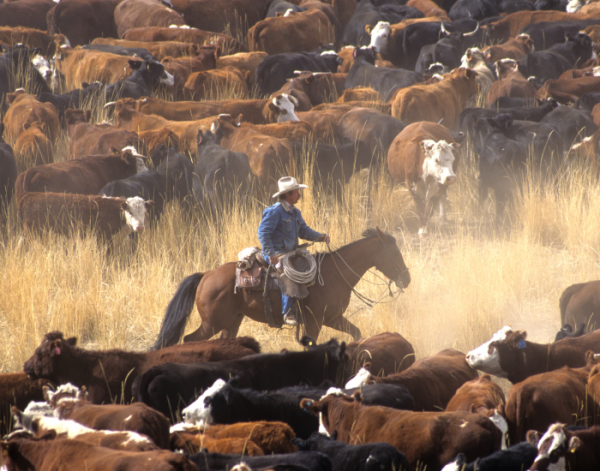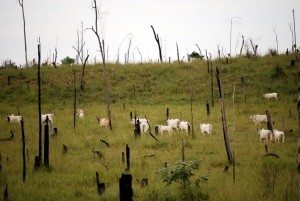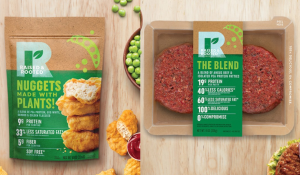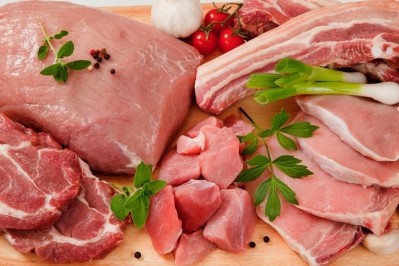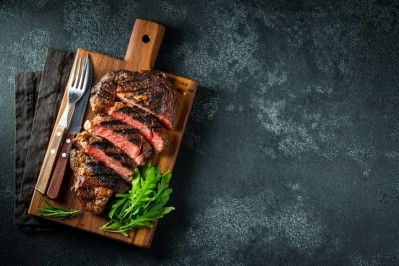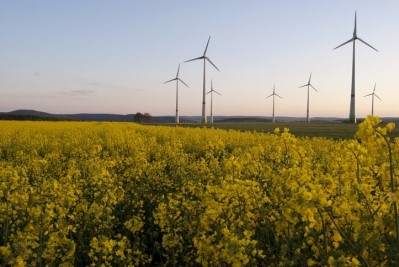Tyson Foods talks new net zero target: ‘We know we can't do this alone’
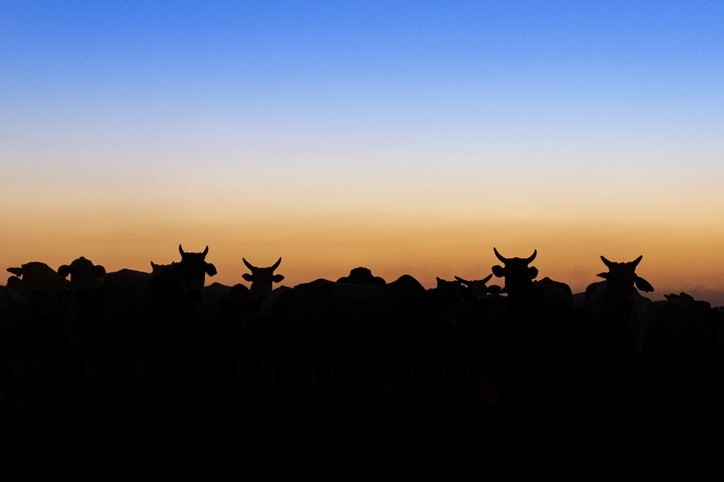
Tyson Foods has unveiled an ambition to achieve net zero greenhouse gas emissions across its global operations and supply chain by 2050. This includes scopes 1, 2 and 3 – meaning that the 10,000 independent farmers and ranchers that supply it will need cut the footprint of the animal proteins they produce.
Food production accounts for one-quarter of GHG emissions and, within that, animal agriculture is responsible for 14% of global CO2 emissions. As consumers increasingly examine the environmental footprint of the food we eat, the animal protein sector is ramping up efforts to address its impact.
This is not a new issue for Tyson Foods. The company was the first US-based protein company in the food and beverage sector to put emission reduction targets in place that have been approved by the Science Based Targets initiative (SBTi). In 2018, it set itself the SBTi-validated goal of achieving a 30% reduction of GHG emissions by 2030, an aim the company says is aligned with the global drive to limit the average temperature increase to 2℃.
The new 2050 ambition builds on this effort, Sustainability Manager Kelsie Gibbs told FoodNavigator. The company plans to update the baseline for emissions to align with limiting global temperature rise to 1.5℃, consistent with the Paris Agreement, by the end of 2023.
“Our net zero emissions ambition is an expansion of our target to reduce GHG emissions 30% by 2030, which was approved by the Science Based Target Initiative in 2018 and will continue to serve as a milestone toward reaching the 2050 net-zero ambition,” Gibbs explained.
‘Achieving net zero is a large undertaking’
Tyson’s global operations include 239 facilities and 139,000 employees worldwide. "Achieving net zero emissions is a large undertaking," the company noted in its announcement.
So, how does it plan to go about cutting its footprint?
The group will look at emissions tied to its direct global operations, energy emissions and the supply chain. Outlining its priorities, Tyson said its net zero pathway will focus on investments, renewable energy, land stewardship, deforestation, manure management, farm energy, feed, fertilizer, enteric methane and external partnerships.
Within its own operations, Tyson plans to invest in improved resource efficiency and lower impact models. For instance, by 2030 Tyson intends renewable energy to account for 50% of its domestic energy use.
The largest challenges for Tyson, however, lie in scope 3 emissions generated in its supply chain.
“We know that a majority of emissions occur on-farm, so working with our farmers and suppliers to reduce those emissions will be key,” Gibbs told us.
Tyson plans to complete an initial land stewardship target of engaging 2m feed acres to support improved environmental practices. This is the ‘largest ever’ sustainable grain commitment from a US-based protein company and stretches to the overall target of 100% of feed purchased by 2030.
The group is also working to verify sustainable cattle practices across more than 5m acres of cattle grazing acres by 2025. This target will be expanded, Tyson said.
“Two key focus areas on our pathway to achieving net zero are our land stewardship and grazing lands targets. By 2025, we plan to meet and expand our current land stewardship target of engaging 2m feed acres, including a total target of 100% of feed purchased by 2030. Additionally, we will look to expand our current 5m acre grazing lands target for sustainable beef production practices by that time as well,” Gibbs elaborated.
But while these are important elements of Tyson’s path to net zero, Gibbs was quick to stress that the company maintains an ‘agnostic’ view of practice implementation.
“The opportunity to improve production practices are based on site and operational conditions,” the sustainability expert explained.
“With an extremely complex and interconnected supply chain, we know we can't do this alone. We do business with more than 10,000 independent farmers and ranchers across the country and those farmers are most knowledgeable of how to raise food and fibre and we applaud their continuous improvements made over the past several decades.”
Collaboration will be a fundamental driver. As well as working alongside its suppliers, Tyson engages with a number of NGOs in its efforts to build a more sustainable animal protein sector. Tyson will continue its involvement in World Wildlife Fund Forest Land and Agriculture (FLAG) Consultative Group and continue partnerships and collaborations with organizations such as World Resources Institute, The Nature Conservancy, Environmental Defense Fund, and World Wildlife Fund, the company said.
“We will continue to work with both our science-based and supply partners to ensure we’re doing what’s best for our planet.”
Land-use change and deforestation
Alongside agriculture, deforestation and land-use change are also big contributors to global heating. Forests store large amounts of carbon and the plants within them absorb carbon dioxide as they grow. Research from the World Resources Institute, averaged over 2015-2017, concludes that global loss of tropical forests contributed about 4.8bn tonnes of carbon dioxide per year.
Tyson has already kicked off efforts to address deforestation risk within its supply chain, Gibbs stressed.
“In October of 2019 we engaged PROFOREST to help conduct a deforestation risk assessment across our global agricultural supply chain, focusing on four commodities – cattle and beef, palm oil; soy and pulp, paper and packaging. The assessment concluded that 94% of our land footprint is at no-to-low risk of being associated with deforestation. Of the remaining 6% approximately 3% is at medium-to-high risk.”
The company said today that it will entirely eliminate deforestation in its supply chain by 2030.
“To proactively address the 6% at risk, we developed and publicly released a Forest Protection Standard, which outlines steps we will take to continue minimizing deforestation risk and protect the forests in the geographies we source,” Gibbs explained.
A portfolio shift towards plant-based?
The high GHG output of animal production means plant-based diets are frequently cited as a more sustainable option. According to some estimates, the climate impact of plant-based foods is typically 10-to-50 times smaller than that of animal products.
High levels of consumer interest and innovation that is broadening the appeal of plant-based products to more consumers through the development of high-quality meat analogues is supporting growth. According to Research and Markets, plant-based food market is expected to grow at a CAGR of 11.9% from through to 2027 to reach sales of US$74.2bn.
While the vast majority of Tyson’s annual revenue – which stood at $43.2bn last year – is generated in meat, the company is nevertheless eyeing the high-growth plant protein category. This year, the group launched two plant-based brands Raised & Rooted and First Pride.
Does this signal that a portfolio shift towards more plant-based products could be part of Tyson’s net zero strategy?
Gibbs downplayed the prospect.
"At Tyson, we are avid believers in the power of choice for consumers. For us, it’s about 'and' not 'or' and giving people more options while continuing to focus on holistic solutions across all proteins to sustainably feed the world. We have a healthy and robust alternative proteins business. We just announced new plant-based products through our Raised & Rooted line, and we are always looking at ways to stay ahead of and involved in changing consumer preferences when it comes to diet," she said.
With global meat sales dwarfing those of plant-based alternatives ($1,223.4bn versus around $1.4bn), for the food sector as a whole to transition to a carbon neutral future it is clear that solutions for low impact animal agriculture will be vital.

